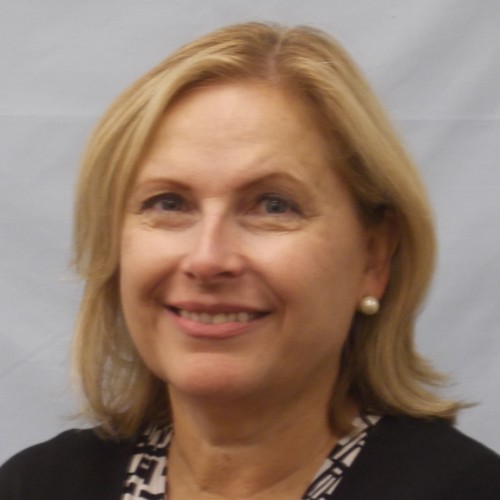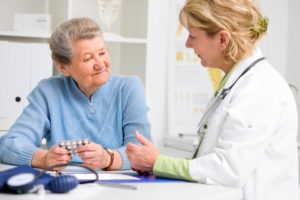Technology takes off in long-term care
Until recent years, “technology” and “long-term care” weren't often used in the same sentence. That may be a slight exaggeration, but one would be hard-pressed to argue against the perception that the LTC industry is somewhat of a late adaptor of technological advancements. However, provider demand, vendor interest and a growing number of tech-savvy seniors are changing all that.
“Technologies that were a vision five years ago are no longer just visions or prototypes—they are real products on the market that service providers and seniors can integrate,” says Majd Alwan, PhD, vice president, Center for Aging Services Technologies (CAST), affiliated with LeadingAge (formerly the American Association of Homes and Services for the Aging). In the following pages, Dr. Alwan, a leading expert in the field of emerging technologies for the senior care market, shares his thoughts on the top technology innovations in long-term care that have emerged to broader use over the past decade.
Where does your organization stand when it comes to implementing the latest managerial, operational and resident care technology solutions?
INTUITIVE COMPUTER INTERFACES
Touchscreens and graphic user-interfaces have made computer technologies accessible to frontline staff as well as seniors, who may be less comfortable working with a mouse and/or keyboard. “They have enabled electronic documentation services by CNAs, whether these screens are wall mounted or part of a tablet or other handheld device,” says Alwan. “This also applies to voice data entry, to a lesser extent. These interfaces also enable a number of social connectedness and entertainment applications for seniors, including email, social networking, Internet browsing as well as brain and physical fitness technologies.
“This innovation has made computing devices accessible not only to frontline staff that might not have the same computer competencies and skills as administrators and RNs but to older adults who are even less familiar with computer technologies,” says Alwan.
WIRELESS DATA COMMUNICATION/NETWORKS
The development and accessibility of wireless data communication/networks has spurred mobile computing and point-of-care systems. It has empowered staff and seniors who use mobile Internet devices. “The advent of this technology has allowed us to access data and to perform mobile computing, whether it's with laptops, tablets, handheld devices, even smartphones,” says Alwan. “It has severed the tether—allowing us to carry the devices, roam around and have access to data from anywhere within a facility or—with the advent of 3G and 4G networks—not only within the facility but anywhere you have similar wireless coverage.”
ELECTRONIC HEALTH RECORD (EHR) SYSTEMS
EHRs provide complete information about residents—their conditions, allergies, medications—as well as their needs and preferences. These systems-when coupled with others, like e-prescribing, physician electronic order entry systems, clinical decision support systems and electronic medication administration systems—can reduce medical errors, says Alwan.
“EHR and EMR (Electronic Medical Records) are often used interchangeably,” says Alwan. “EMR refers to all interactions a provider has had with a patient—specifically to an organization or specific to a care facility. When people started talking about the interoperability and the exchange of health information, that term migrated to the definition of EHR as a record of the interactions that any provider had with that individual.”
ELECTRONIC RECORDS SHARING
Interoperability standards that enable LTC providers to electronically share the health records of their residents with hospitals and physicians makes the previous innovation a system that can exchange the information beyond the walls of the facility. “This is extremely important for the elderly, particularly around transitions of care, which occur more frequently in the population served by long-term care providers compared to other populations,” says Alwan. “The interoperability standards are starting to be implemented by the EHR vendors that work in long-term and post-acute care. Many of them plan to have their records certified by one of the national interoperability certification commissions later this year.”
TELEMEDICINE/TELEHEALTH
The American Telemedicine Association has historically considered telemedicine and telehealth to be interchangeable terms, encompassing a wide definition of remote healthcare. “Patient consultations via videoconferencing, transmission of still images, e-health including patient portals, remote monitoring of vital signs, continuing medical education, consumer-focused wireless applications and nursing call centers—among other applications—are all considered part of telemedicine and telehealth,” states the association on its website (www.americantelemed.org).
“Telemedicine has the potential to allow LTC providers to remotely access highly trained clinicians and specialists to help them deliver higher-acuity services and improve the overall quality and timeliness of care delivered, while reducing transitions, especially in rural areas where access to such clinicians is limited,” says Alwan. “Telehealth allows LTC providers to help their residents in managing chronic conditions, improving outcomes and preventing hospitalizations and hospital readmissions through remote patient monitoring.”
One of the barriers to broader adoption of telehealth is reimbursement, says Alwan. Telehealth services aren't currently reimbursed beyond the 30-60 day post-hospital discharge.
“The interesting thing about telehealth is that these innovations are interconnected and build upon each other,” says Alwan. “There's a new branch of telehealth, called mHealth, that primarily uses mobile devices like the smartphone or iPad, to act as the data hub for peripheral physiological monitoring devices like the blood pressure cuff or glucometer. Data is transmitted over a wireless network and is stored in a personal health record that can trigger alerts to the caregiver or physician or help the individual in managing chronic conditions.
“Telehealth can be exciting, particularly if healthcare professionals are properly incentivized or reimbursed for the time required to review the data and recommend an appropriate course of action,” says Alwan. “CMI [Center for Medicare and Medicaid Innovation] will be charged with evaluating innovative technology-based care models and recommending changes to reimbursement policies based on the findings.”
BEHAVIORAL/ACTIVITY MONITORING SYSTEMS
Behavioral/activity monitoring technologies allow caregivers to monitor resident behavior and activities and detect changes or abnormalities indicative of early changes in health status. The simplest of these technologies uses motion sensors while others incorporate more sophisticated sensing modalities that assess sleep quality and measure heart and breathing rates.
“These systems detect changes in behavior indicative of changes in one's health status,” explains Alwan. “A caregiver can note a decline in health well before a resident becomes symptomatic. With urinary tract infections, for example, one can potentially detect them early based on nighttime restlessness in bed and frequent bathroom visits.”
FALL PREVENTION/DETECTION SYSTEMS
Fall prevention/detection systems are aimed at residents susceptible to falls. They include bed and chair alarms, as well as automatic fall detectors worn by the user. “These technologies have the potential to reduce falls when adequate staffing is not available and can summon staff/emergency services to reduce rescue time, reduce the severity of the ensuing injury and improve the outcome of a fall,” says Alwan.
Personal fall detection systems have evolved from the push-button systems that required a user to activate an alert. “Today's systems detect falls automatically so if a person is incapacitated or unconscious or confused, the device triggers an alert,” says Alwan. “Also, there are systems embedded in the environment that will trigger an alarm when there is a lack of motion. These can include camera-based or floor-vibration systems, for example.”
TRACKING/WANDER MANAGEMENT SYSTEMS
Tracking/wander management systems address wandering and elopement issues with seniors suffering from memory loss/dementia. They allow caregivers to keep track of residents to ensure their safety.
A number of technologies address wandering management, including radio-frequency transmitters that use beacons to locate an individual and RFID (radio-frequency identification) devices where a resident wears an ID tag in the form of a bracelet or ankle strap. There are also GPS (global positioning system) and cellular signal-based systems.
“One of the biggest issues with these devices is the reluctance of the person to wear them so we're starting to see companies embed sensors in apparel,” says Alwan. “There's even a GPS shoe with the GPS embedded in the sole of the shoe. These are not for people with mild cognitive decline; they're normally for people at risk and certainly you need to balance the safety of the individual and the concern of the caregiver with the privacy of the individual.”
MEDICATION ADHERENCE SYSTEMS
Electronic Medication Administration Records (eMAR) systems and automated medication dispensers allow for tracking medication adherence. eMARs are usually software systems implemented on laptop, tablet or handheld devices that staff can use on their rounds to ensure and document that residents are taking their medications as prescribed. “Automated medication dispensers are designed for functional seniors who can take medications on their own with some assistance,” says Alwan. “These devices can be programmed and filled by the caregiver or nurse and they alert the individual when it's time to take his or her medication. If the user misses a dose, that dose may then be locked to prevent double dosing. Some of these systems offer monitoring capability, providing the caregiver with a medication adherence record.”
BRAIN AND PHYSICAL FITNESS TECHNOLOGIES
Cognitive and physical fitness technologies have exploded in recent years as both consumers and senior caregivers strive to realize healthful benefits from these systems, which are often game-based. Fun with a purpose, you might say. And while some recent studies cast doubt on the long-term benefits of brain-stimulating activities like crossword puzzles and math games, the growth of the market for these systems indicates that the mental and social benefits—if even for a short term—are worth the investment in time and resources.
Therapists have been using virtual environment-type games for rehabilitation therapy for the past decade or so. This “cybertherapy” has been found to motivate, encourage and reward residents with an improved quality of life in a shorter period of time—and allows them to have fun, too, claims Randolf Palmaira, executive director of the Center for Nursing and Rehabilitation, a member of the Beth Abraham Family of Health Services in New York. Palmaira wrote about his organization's successful application of these therapies in the January 2011 issue of Long-Term Living (“Welcome to Cybertherapy,” page 33).
“Thanks to intuitive user interfaces, touchscreens, graphical user interfaces, accelerometer controllers and the like, these technologies provide hours of entertainment and fun activities that have or may have a therapeutic benefit for residents,” says Alwan.
Long-Term Living 2011 July;60(7):66-70

Patricia Sheehan was Editor in Chief of I Advance Senior Care / Long Term Living from 2010-2013. She is now manager, communications at Nestlé USA.
Related Articles
Topics: Articles , Technology & IT











